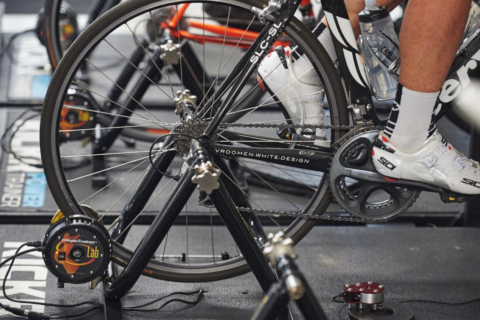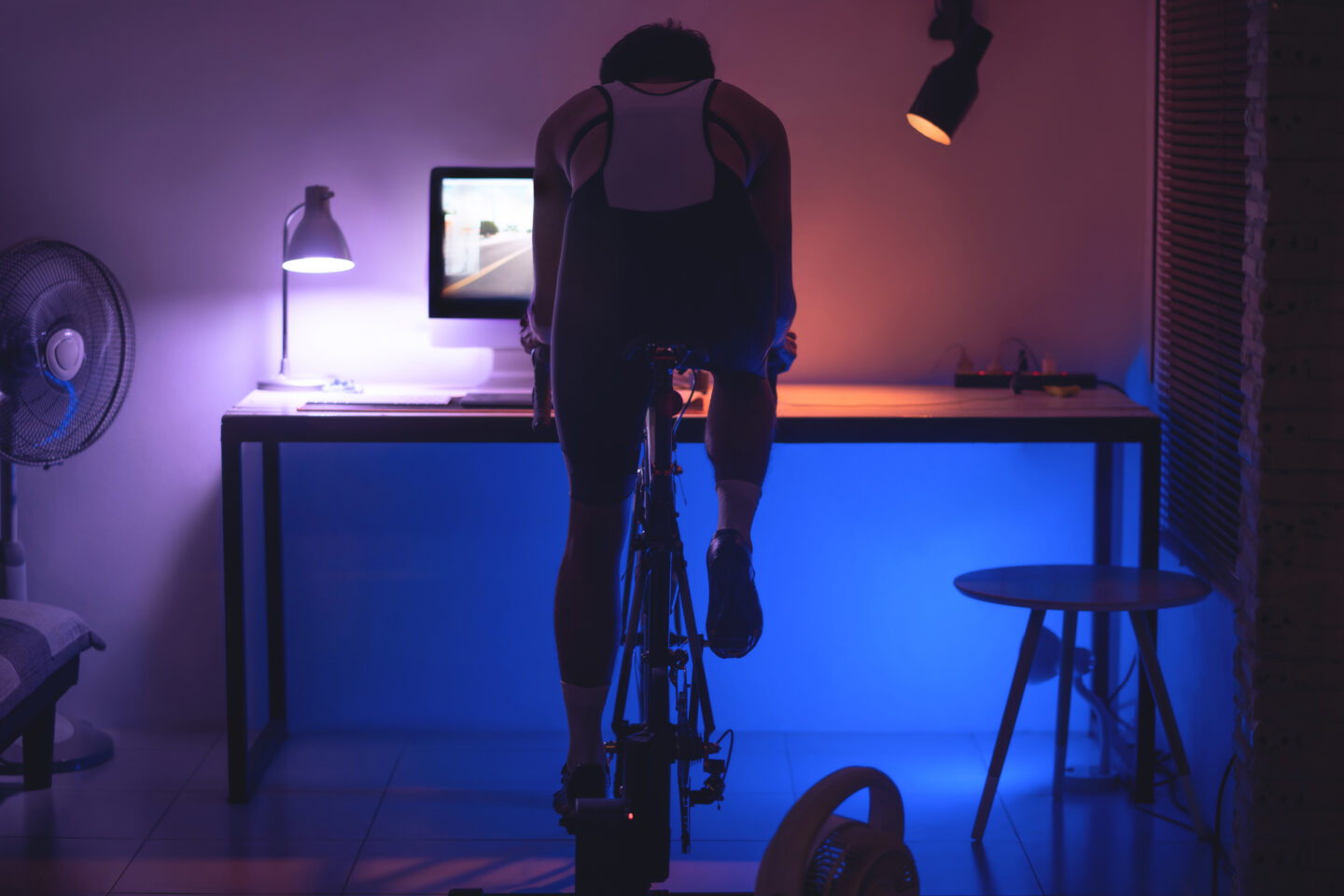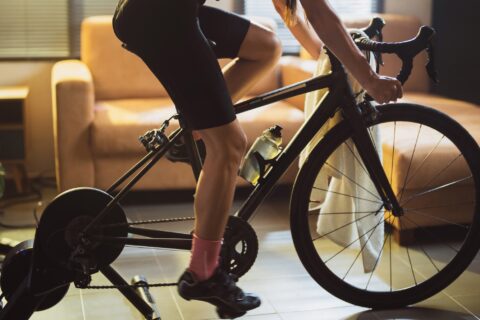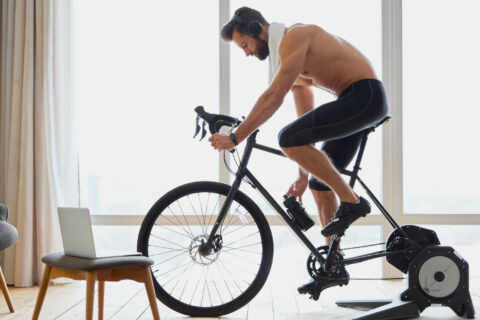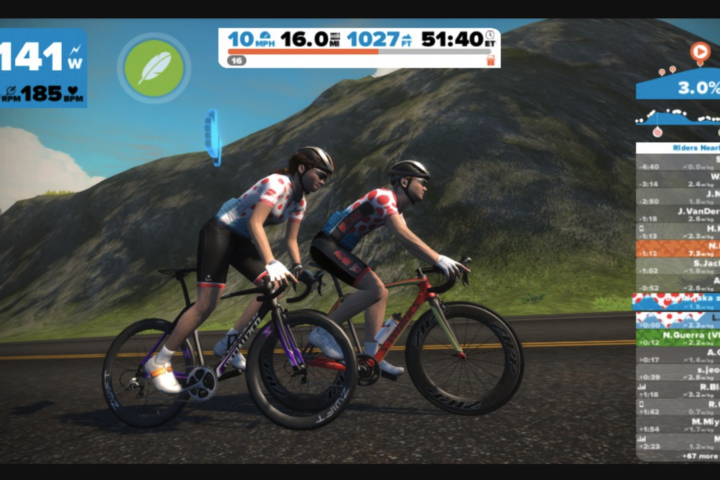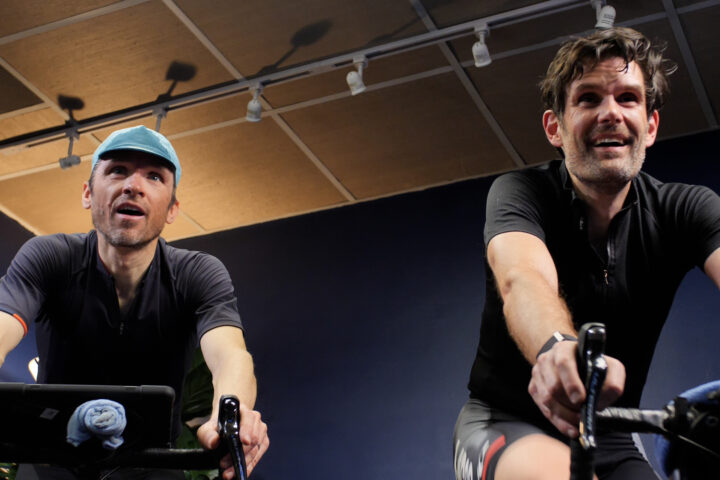Are you dreading the thought of another trainer session in your basement this winter? Are you hoping to get the most out of trainer time and not get overcooked by racing every time you get on Zwift?
Hopefully, your days of staring at the basement wall while riding a clunky, loud trainer are behind you. Perhaps you’ve invested in a smart trainer and/or online tools that have allowed you to “game-ify” your trainer experience.

Indoor Cycling and Heat Management with Dr. Stephen Cheung
If so, it’s helpful to understand a bit more about the science and experience of the trainer to know how to maximize the benefits of your indoor sessions. For instance, riding on a trainer differs from riding on the road in more than the obvious ways.
Of course, the experience and our interaction with the bike is different. But did you know that the different inertia generated by the trainer has an effect on our biomechanics? These differences can impact our power, heart rate, and our perception of how hard we’re working for a given effort; thus, we shouldn’t use the same numbers inside and outside, and we shouldn’t consider an indoor ride of one hour to be the same as an outdoor ride of one hour.

Mastering Indoor Cycling, with Joe Friel, Jim Rutberg, and Riders on the eSports Team Saris-The Pro’s Closet
There are several situations when it’s best to use a trainer—there are even some scenarios when it may be even better than riding on the road. This can include sessions when you focus on neuromuscular work, for instance.
On the other hand, there are certain types of rides when you might want to avoid the trainer altogether; for example, the long, slow ride. Completing such a mind-numbing ride on the trainer would be a sign of incredible dedication. But most coaches and experts would suggest you never do it again if it can be avoided.
If weather or other circumstances prevent you from getting outdoors for a full-distance endurance ride, consider an alternative approach: set up everything you’ll need to ride the trainer, then head outside for as many hours as you can tolerate, before returning home and immediately jumping onto the trainer to create one big, combined ride of several hours or more.
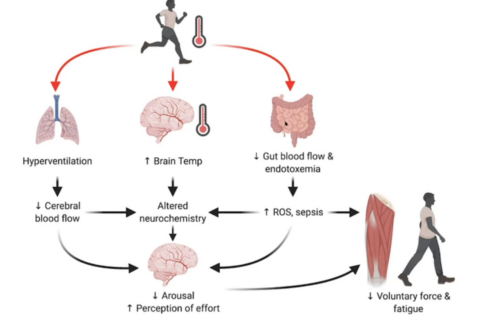
Your Winter Guide to Indoor Cycling, with Dr. Stephen Cheung
The gameification of trainers by tools like Zwift, Trainer Road, and Sufferfest is changing our perspective on trainers. They can be both good and bad. If abused, they can lead to overtraining.
But used strategically, they can be a useful way to keep the motivation high, to add in some intensity or key threshold workouts, and/or stave off the winter training doldrums. The key is to not overdo the number of times you turn your trainer rides into online races. Doing so will ultimately make you prone to burnout or see you peaking in March when your key races are still months away.
Coach and sports scientist Ciaran O’Grady has conducted some of the definitive research on the biomechanical differences between riding on a trainer and riding on the road. Here’s what he had to say about making the most out of riding a trainer:
“Make it fun. Make it different. There are a lot of ways you can mix it up: gameification with Zwift or any of the new apps that are coming out. It is a tool, so use it as such. But be careful with it, as it can come back to bite you in the ass if you solely use the trainer to train indoors—especially when it comes to racing when you might have lost handling skills that are dialed in with the speed of the pack. But it can be a very valuable tool; learn it, love it, but don’t rely on it and do it all the time.”
For more on the science of trainers, check out:
